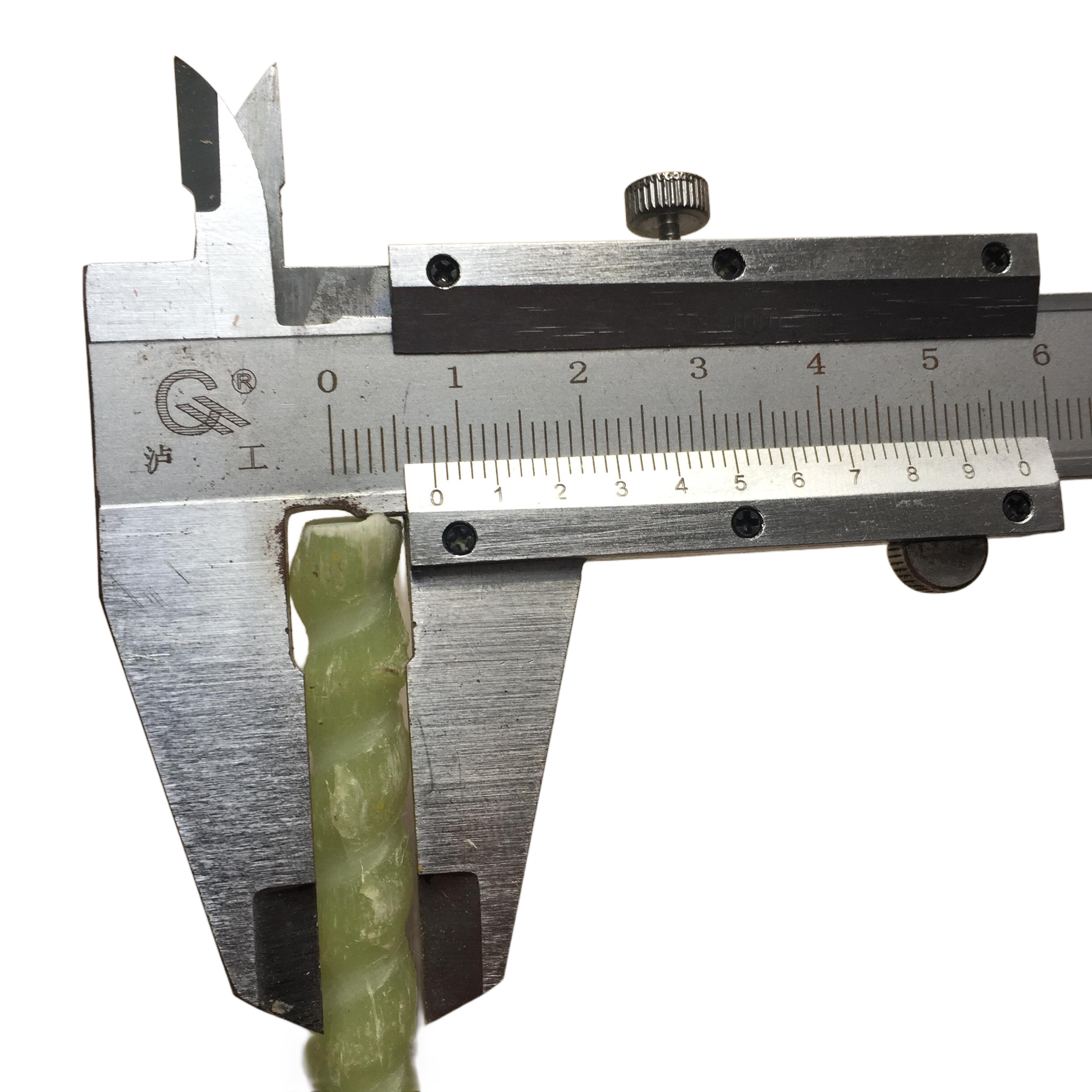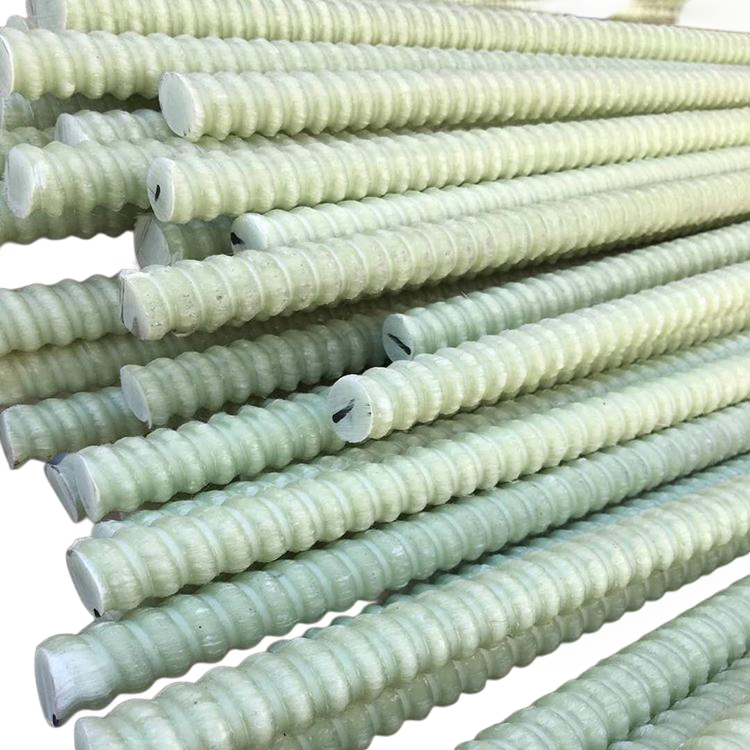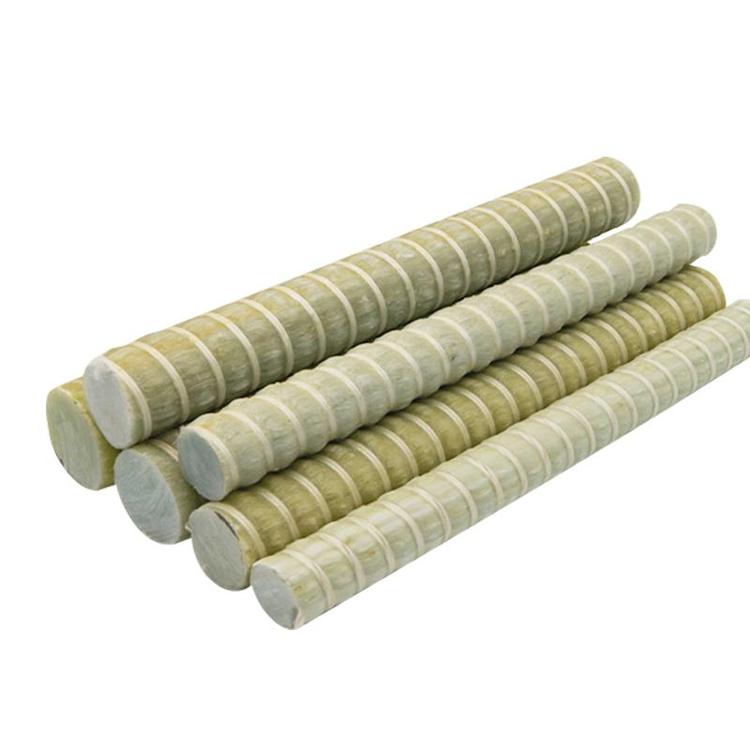Introduction
In the realm of geotechnical engineering and construction, anchor cables play a pivotal role in ensuring structural stability and safety. The advent of advanced materials has led to the development of the Glass Fiber Anchor Cable, which promises enhanced performance over traditional steel anchor cables. This article presents a comprehensive comparison between glass fiber anchor cables and their traditional counterparts, examining their material properties, mechanical performance, applications, and future prospects in the industry.
Material Properties
Composition of Glass Fiber Anchor Cables
Glass fiber anchor cables are composed of high-strength glass fibers embedded within a resin matrix, typically epoxy or polyester. The fibers provide the primary load-bearing capacity, while the resin binds the fibers together, offering protection against environmental factors. This composite structure results in cables that are not only strong but also lightweight and resistant to corrosion. Manufacturing processes like pultrusion ensure consistent quality and mechanical properties across the length of the cable.
Composition of Traditional Anchor Cables
Traditional anchor cables are predominantly made from steel, including carbon steel and high-strength alloy steel. Steel cables have been the industry standard due to their high tensile strength and ductility. However, steel is susceptible to corrosion, especially in aggressive environments with high moisture, salinity, or acidity levels. Protective coatings like galvanization or epoxy paints are often applied to mitigate corrosion, but these measures can increase costs and require regular maintenance.
Mechanical Properties Comparison
Tensile Strength and Elastic Modulus
Both glass fiber anchor cables and steel cables exhibit high tensile strength. Glass fiber cables have tensile strengths ranging from 600 to 1000 MPa, while steel cables typically range from 900 to 1200 MPa. However, the specific strength (strength-to-weight ratio) of glass fiber cables is higher due to their lower density. The elastic modulus of glass fiber cables is around 40 to 50 GPa, significantly lower than steel's 200 GPa. This difference means glass fiber cables are less stiff, which can be advantageous in absorbing dynamic loads but requires careful design to prevent excessive deformation.
Corrosion Resistance
Corrosion is a critical factor affecting the longevity and reliability of anchor cables. Steel cables are prone to rust and corrosion, leading to reduced cross-sectional area and weakened structural integrity. In contrast, Glass Fiber Anchor Cable offers excellent resistance to corrosion, even in harsh environments. The inert nature of the composite materials makes them impervious to moisture, chemicals, and chlorides, resulting in longer service life and reduced maintenance costs.
Weight and Handling
The density of glass fiber composites is approximately 1.9 to 2.1 g/cm³, significantly lower than steel's 7.85 g/cm³. This substantial weight difference translates to easier handling, reduced transportation costs, and faster installation times. In projects where access is challenging or where equipment capacity is limited, the lightweight nature of glass fiber anchor cables provides a practical advantage, enhancing overall project efficiency.
Thermal and Electrical Properties
Glass fiber anchor cables have a lower coefficient of thermal expansion compared to steel, reducing thermal stresses in structures exposed to temperature fluctuations. Additionally, they are non-conductive and non-magnetic, making them ideal for applications where electrical insulation is required or where electromagnetic interference must be minimized. This property enhances safety in environments such as power plants, tunnels, and mining operations where electrical hazards are a concern.
Applications in Various Industries
Mining Industry
In the mining sector, ground support is critical for the safety of underground operations. The use of glass fiber anchor cables enhances safety due to their corrosion resistance and non-conductive properties. They prevent sparking and electrical hazards, which is essential in environments where flammable gases may be present. Furthermore, their lightweight nature facilitates handling in confined spaces, improving installation efficiency.
Civil Engineering Projects
Glass fiber anchor cables are increasingly used in civil engineering applications such as slope stabilization, retaining walls, and foundation reinforcement. Their corrosion resistance ensures long-term performance without the need for protective coatings. In aggressive soil conditions or coastal areas, they provide a durable solution that extends the lifespan of structures. Engineers also benefit from the material's predictable behavior and compatibility with various ground conditions.
Marine and Offshore Structures
Marine environments subject materials to relentless corrosive forces due to saltwater exposure. Traditional steel anchors require significant maintenance and replacement over time. Glass fiber anchor cables offer a superior alternative, withstanding the harsh maritime conditions without degradation. They are used in applications such as dock stabilization, sea wall reinforcement, and anchoring offshore platforms, where longevity and reliability are paramount.
Case Studies
Tunnel Reinforcement in Harsh Environments
In the construction of the Alpine Tunnel, engineers faced challenging geological conditions with high moisture and acidic groundwater. The decision to utilize glass fiber anchor cables was based on their corrosion resistance and mechanical properties. Over a monitoring period of five years, the cables exhibited no signs of strength degradation, and the tunnel structure remained stable. This project demonstrated the viability of glass fiber anchor cables in demanding underground environments.
Bridge Rehabilitation Project
The Golden Bay Bridge required rehabilitation due to corrosion-induced deterioration of its steel anchor systems. Engineers replaced the old anchors with glass fiber anchor cables to prevent future corrosion issues. The new system provided the necessary structural support while eliminating the ongoing maintenance challenges associated with steel anchors. The success of this project has encouraged the adoption of glass fiber cables in other bridge constructions nationwide.
Cost Analysis
While glass fiber anchor cables may have a higher initial cost compared to traditional steel cables, a life-cycle cost analysis reveals significant long-term savings. Factors contributing to this include reduced maintenance expenses, decreased need for corrosion protection systems, and extended service life. For instance, a study conducted on a coastal infrastructure project showed that over a 20-year period, the total cost of ownership for glass fiber cables was 30% lower than that of steel cables when accounting for maintenance and replacement costs.
Environmental Impact
The environmental benefits of using glass fiber anchor cables are noteworthy. The production of composite materials typically results in lower carbon emissions compared to steel manufacturing. Moreover, the absence of corrosion reduces environmental contamination risks associated with rust and the leaching of protective coating materials. Utilizing glass fiber cables contributes to sustainability goals by enhancing the longevity of structures and reducing the frequency of replacements and repairs.
Future Prospects and Technological Advancements
Research and development efforts are ongoing to further enhance the properties of glass fiber anchor cables. Innovations in fiber technology, such as the use of high-performance glass fibers or hybrid composites, aim to increase tensile strength and stiffness. Advances in resin formulations are also improving resistance to ultraviolet light and fire, expanding the range of applications. As manufacturing processes become more efficient, the cost of glass fiber anchor cables is expected to decrease, making them even more competitive with traditional materials.
Practical Recommendations for Engineers
Engineers considering the integration of glass fiber anchor cables into their projects should perform thorough analyses of load requirements, environmental conditions, and compatibility with existing construction materials. Collaboration with manufacturers can provide valuable insights into material behavior and assist in optimizing design parameters. It is also essential to stay updated on industry standards and guidelines governing the use of composite materials in structural applications.
Limitations and Considerations
Despite their advantages, glass fiber anchor cables have limitations that must be considered. Their lower modulus of elasticity compared to steel can result in greater elongation under load, which may not be suitable for all applications. Additionally, care must be taken to protect the cables from ultraviolet radiation if they are exposed to sunlight, as prolonged UV exposure can degrade the resin matrix. Fire resistance is another consideration, as composite materials can have different behaviors under high temperatures compared to steel.
Standards and Certifications
The use of glass fiber anchor cables is supported by several industry standards and certifications. Organizations such as the American Concrete Institute (ACI) and the American Society for Testing and Materials (ASTM) have developed guidelines for the design, testing, and application of fiber-reinforced polymer materials. Compliance with these standards ensures that products meet quality and performance criteria essential for structural safety.
Expert Opinions
Industry experts advocate for the adoption of glass fiber anchor cables based on their performance and durability. Dr. Emily Johnson, a renowned structural engineer, notes that "the long-term benefits and reduced maintenance demands of glass fiber anchor cables offer a compelling case for their use in modern construction projects, particularly in environments where corrosion is a significant concern."
Conclusion
The comparison between glass fiber anchor cables and traditional steel anchor cables reveals that while both have their place in the industry, the advantages of glass fiber cables are substantial, particularly in corrosive or weight-sensitive applications. Their high tensile strength, corrosion resistance, and lightweight properties make them a valuable alternative to steel. As advancements in materials technology continue, the role of Glass Fiber Anchor Cable in construction and engineering is expected to grow. Engineers and industry professionals should consider these materials for their projects to leverage the benefits they offer in terms of performance, longevity, and overall cost-effectiveness.




























